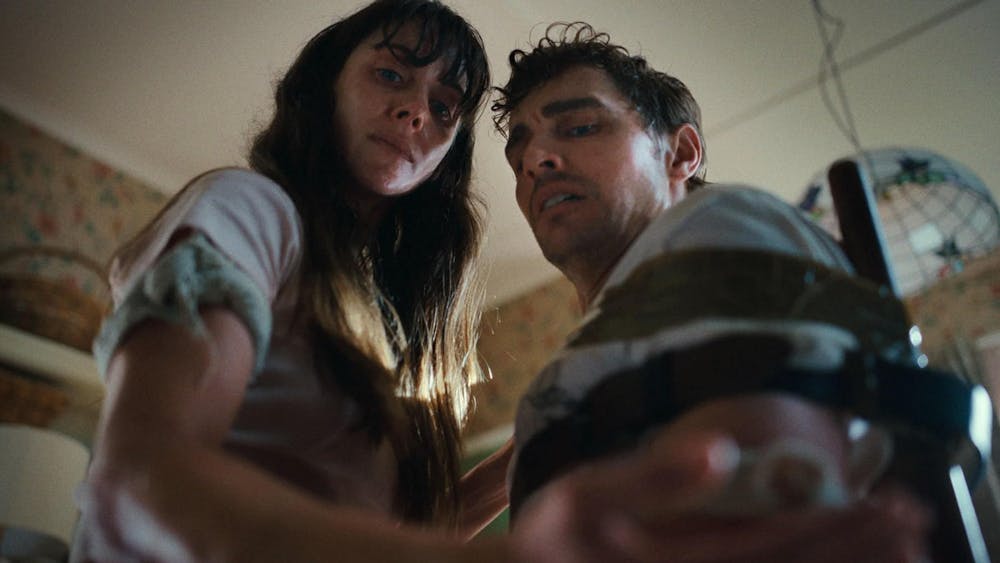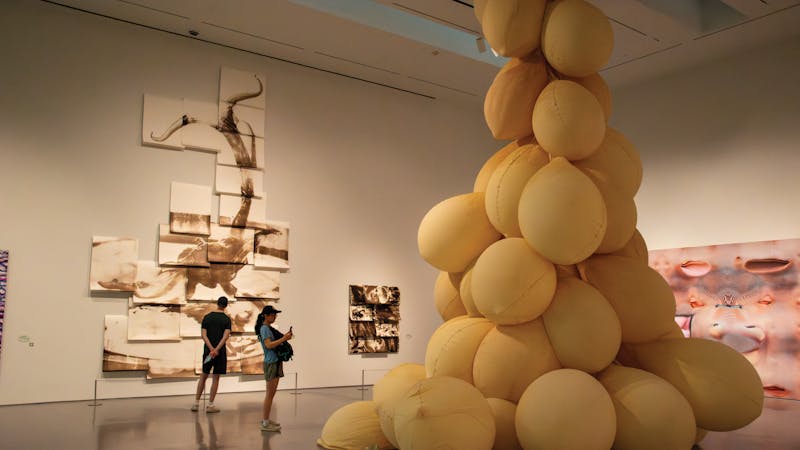"Together" turns codependency into body horror

Rating: ★★★★
After seeing “Together” with a friend, I told her to keep five feet of space between us.
The movie takes every relationship platitude — “you complete me,” “my better half,” “I need some space” — and makes it literal, wet and screaming. It’s funny until it isn’t, then funny again in a way that makes you feel complicit.
Have you ever wanted to be with your partner so much that you couldn’t stand being apart? Director Michael Shanks asks what happens if that isn’t a metaphor, but a biological imperative. As a reality check for a previous relationship, it hits close and keeps closing the distance.
The setup is simple on paper: a couple moves for a reset. Millie (Alison Brie) and Tim (Dave Franco) are that pair who call it a partnership but mainly enable each other. She’s got her teaching career together, and he’s still chasing music dreams at 35.
When they move upstate for her job and fall into a mysterious cave during a hike, something in the water changes the rules. Tim’s need for space suddenly flips into an irresistible urge never to leave Millie’s side. Literally, their bodies start fusing together, piece by piece, and the movie asks: Is this love or horror?
The answer depends on how you feel about codependency, which the movie understands better than most relationship dramas. Watching this unfold, I kept thinking about how these dynamics work in real life. Codependent relationships don’t start with dramatic red flags; they begin with someone who needs to be needed meeting someone who needs to need.
Millie makes decisions for both of them because Tim won’t make any. Tim avoids responsibility because Millie will handle it. It’s dysfunction that feels like love until you realize neither person can function alone. When Tim physically cannot leave Millie’s side, it’s just the logical endpoint of emotional patterns they’ve been practicing for years.
It’s pure relationship horror — when you realize two people who think they love each other are trapped in patterns that make them both miserable. All I could think was “they should break up.” The movie also knows this, which makes everything that follows feel inevitable rather than random.
What makes “Together” genuinely unsettling isn’t the gore; it’s recognizing these dynamics in the flesh. The way Millie justifies Tim’s behavior to friends, the way Tim resents Millie’s competence while depending on it and the way they both mistake intensity for intimacy.
Shanks understands that codependency isn’t about loving someone too much but about loving them in a way that diminishes both people.
The physical fusion becomes a metaphor for how codependent couples lose track of where one person ends and the other begins, except here the metaphor has teeth and requires actual surgery to reverse.
This is where the meta casting becomes crucial rather than gimmicky. Watching real-life spouses Brie and Franco navigate this premise adds a layer of voyeuristic discomfort that a film about fictional characters couldn’t achieve. When things get physical — and they do — you’re acutely aware that these are two people who actually go home together.
What keeps “Together” from becoming a one-note gimmick is its commitment to exploring why people stay in relationships that consume them.
The film doesn’t judge Tim and Millie for their dysfunction. Instead, it asks what happens when emotional patterns become physical reality. The body horror serves the relationship drama, not the other way around, which is why moments that should be purely gross manage to feel genuinely unsettling instead.
“Together” succeeds because it commits to its absurd premise without winking at the audience. It’s not groundbreaking horror, but it’s smart enough to know that the scariest monster often looks exactly like love.
More from The Rice Thresher

Moody Center’s new exhibit blurs the line between body and machine
Swelling latex sculptures, inspired by placentas and umbilical cords have taken up residence in the Moody Center for the Arts. The Barcelona-based artist Eva Fàbregas describes her pieces as forms that grow from “the guts of the architecture,” inflating and wrinkling as if they were alive.

Review: On “Live Laugh Love,” Earl Sweatshirt is finally at peace
Peace is both a state and a farewell. On “Live Laugh Love,” Earl Sweatshirt sounds like an artist who has finally found both. For a decade, Earl has been hip-hop’s resident pessimist, rapping in hushed tones about absence, grief and alienation.

“Man’s Best Friend” is confident, not perfect
There’s a moment in BoJack Horseman that I found myself returning to when Sabrina Carpenter unveiled her “Man’s Best Friend” cover. It questions whether women can truly reclaim sexuality in a culture built for the male gaze or if “reclamation” is just a story we tell ourselves to make that gaze feel palatable.

Please note All comments are eligible for publication by The Rice Thresher.